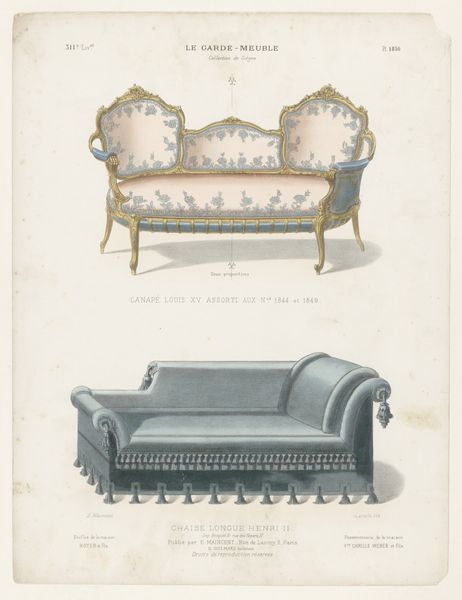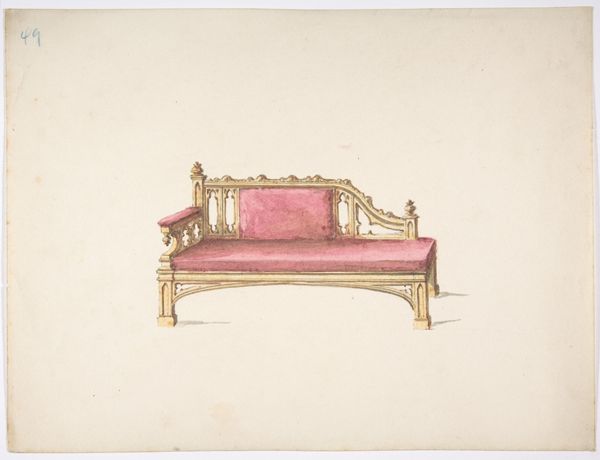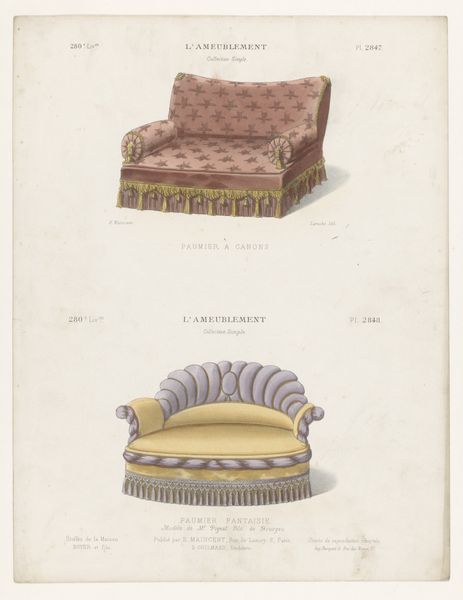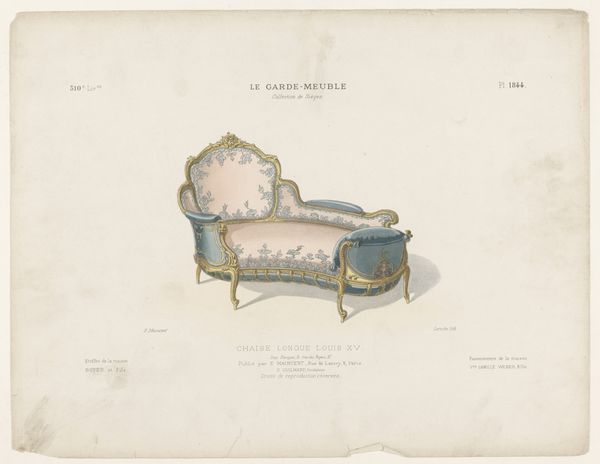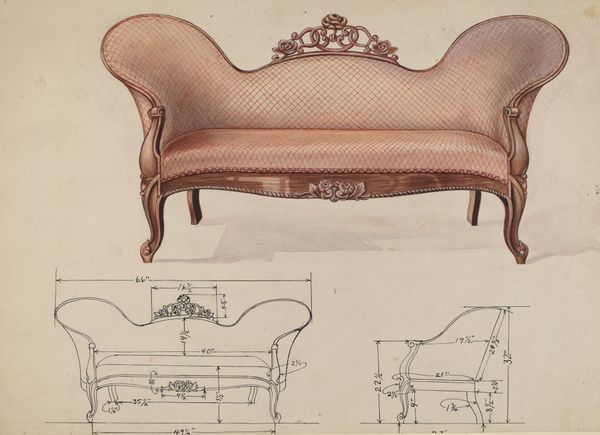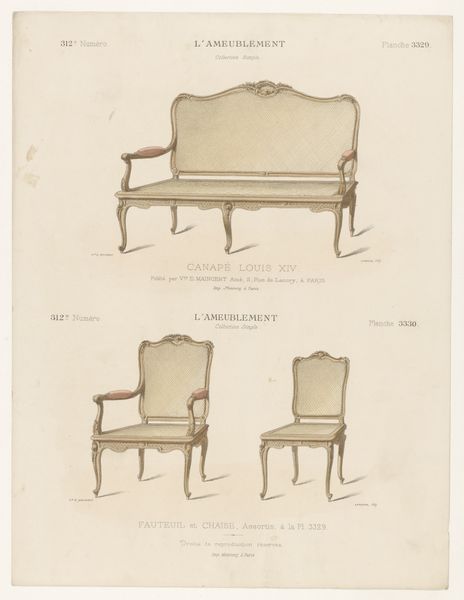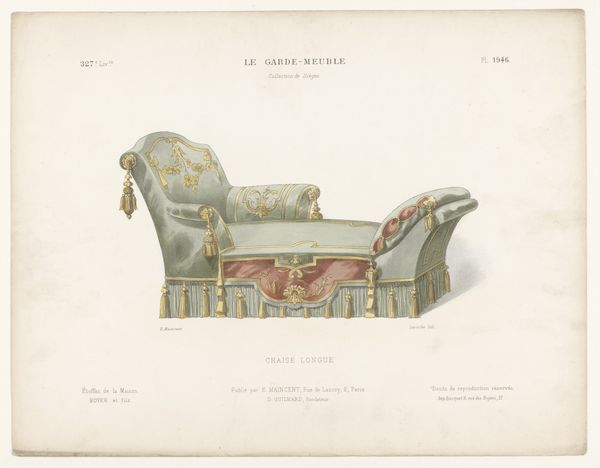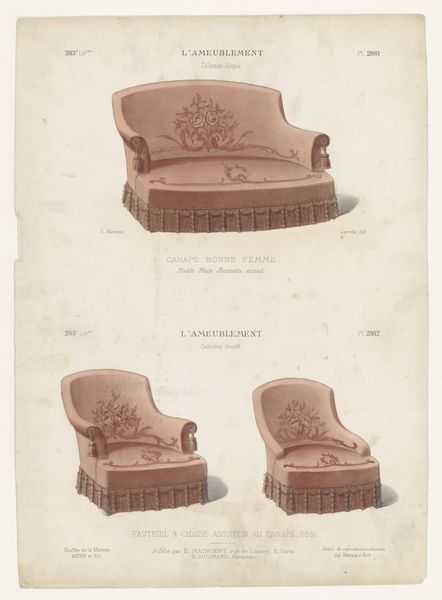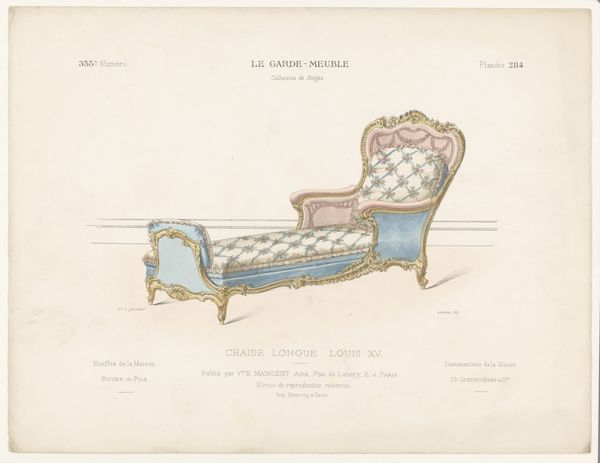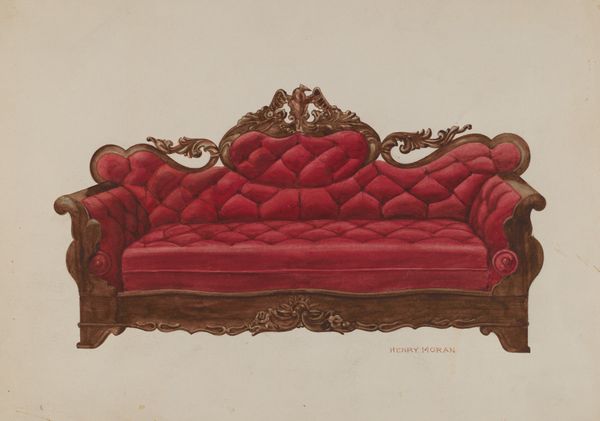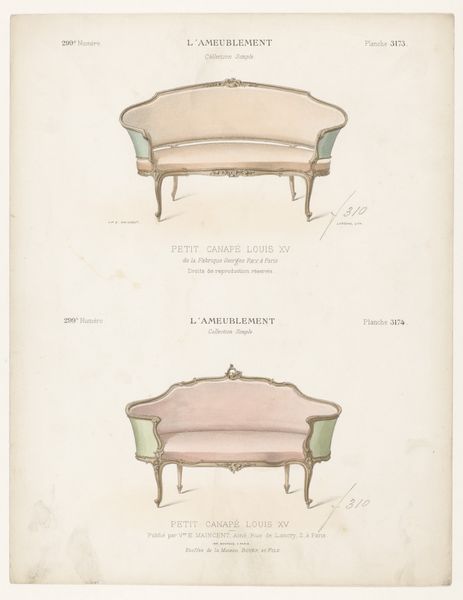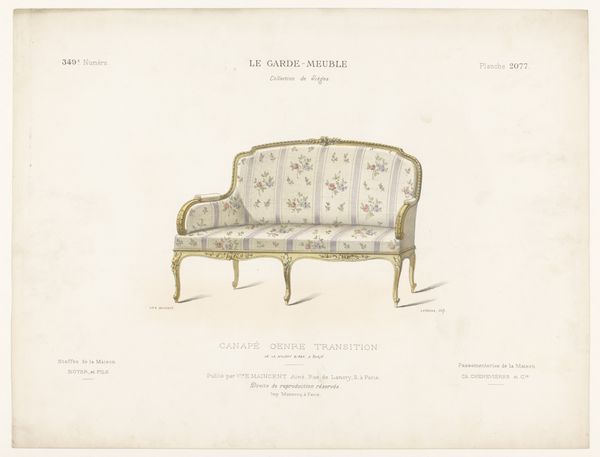
drawing, watercolor
#
drawing
#
watercolor
#
decorative-art
#
watercolor
Dimensions: overall: 35.5 x 28.2 cm (14 x 11 1/8 in.) Original IAD Object: 49 1/2"wide, bottom; 66"wide, top; 28"high overall
Copyright: National Gallery of Art: CC0 1.0
Curator: This drawing, simply titled "Sofa," comes to us from Wellington Blewett around 1936, rendered with watercolor and ink. My immediate impression is the opulence of its plush surfaces contrasting with the linear rigidity of the design sketch. It's both inviting and coldly technical. Editor: Absolutely. Look at the artist’s rendering of that tufted upholstery! It speaks volumes about the design's aspiration to cater to a certain clientele, likely amidst the tail end of the Art Deco movement or leaning towards Hollywood Regency styles meant to convey accessible luxury during a time of economic austerity for many. Curator: That’s interesting to consider. Focusing on the materials—the envisioned velvet or perhaps even a rayon plush and the carefully sculpted wood frame—it makes me wonder about the intended method of production. Was this intended for mass manufacturing or limited, bespoke creation? The clean lines hint towards streamlining. Editor: I see what you mean, but look closely: it also points towards very specific labor practices. The detailed carving, the intricate upholstery work…all of this requires skilled hands. It speaks to a hierarchy of labor involved in the making of luxury objects, drawing distinctions of class and access. Even the scale notations—those meticulously measured lines—suggest controlling processes and people, not just materials. Curator: A critical eye there. To broaden things out, the use of watercolor provides a luminosity that an actual sample perhaps could not. The medium lends itself to an almost ethereal vision of comfort and luxury. It’s as if Blewett aimed to tantalize not with the tangible object, but with an idealized projection of it. Editor: Yes, the artistic vision is there, but what kind of power does an image like this hold when disseminated, especially with that clear name plate at the bottom corner, "Wellington Blewett"? Who was given credit here and whose labor remained obscured? That is who and what deserves more credit than is often given. Curator: Fair point. It prompts reflection about designers’ relationships to laborers and broader societal contexts impacting craft. Editor: Exactly! It highlights how social stratifications play into every aspect of production and, by extension, into how we even perceive something as simple as a sofa. Curator: So, whether as a prototype, an aspiration, or a critique, this design provides ample entry for further considerations. Editor: Agreed; “Sofa” becomes an investigation of not just furniture design, but production hierarchies as well.
Comments
No comments
Be the first to comment and join the conversation on the ultimate creative platform.
